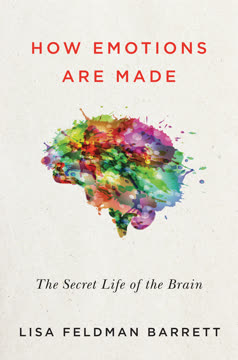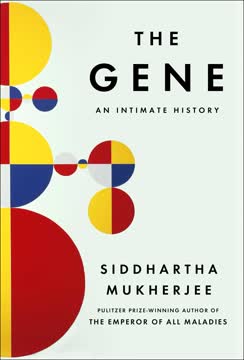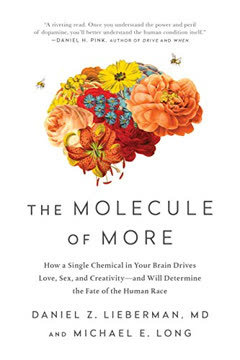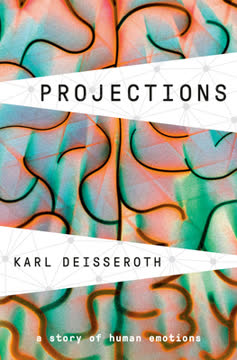Key Takeaways
1. The Human Mind: A Tapestry of Psychiatry, Neuroscience, and Evolution.
The inner workings of the mind give form to these threads—creating a framework within us, upon which the story of each individual can come into being.
Interdisciplinary lens. Understanding the human mind requires a unique blend of perspectives: the empathetic insights of psychiatry, the imaginative reach of literature, and the precise tools of neuroscience. This book weaves patient stories with scientific discoveries, revealing how mental illness exposes the fundamental "warp threads" of our shared humanity. The author's journey, from literature to neurosurgery and finally to psychiatry, underscores the necessity of this multifaceted approach.
Optogenetics and CLARITY. Revolutionary neuroscience technologies, like optogenetics and hydrogel-tissue chemistry (CLARITY), provide unprecedented ways to peer into the brain. Optogenetics, borrowing light-sensitive genes from microbes, allows scientists to precisely control specific neurons with light, linking cellular activity to complex behaviors. CLARITY makes intact brain tissue transparent, enabling high-resolution visualization of neural circuits.
- Optogenetics: Controls specific neurons with light.
- CLARITY: Renders brain tissue transparent for visualization.
- Goal: Link individual cells to global brain function.
Evolutionary roots. Our mental states and vulnerabilities are deeply rooted in millions of years of evolution. Just as genetic mutations reveal the original functions of damaged genes, mental illnesses expose the underlying scaffold of the human mind. By studying these "fraying" points, we gain insight into the adaptive compromises and chance events that shaped our brains, connecting our present experiences to the ancient struggles of our ancestors.
2. Emotions Deconstructed: Neural Pathways for Grief, Anxiety, and Crying.
The clean separability of place preference from risk avoidance highlights a deceptively simple question: why must a state feel bad (or good)?
Grief's complexity. The profound experience of grief, exemplified by Mateo's inability to cry after immense loss, reveals the intricate and sometimes paradoxical nature of human emotion. The author's personal encounter with a dying child, Andi, further underscores the deep, often inarticulable, impact of suffering and the varied ways individuals process it. This subjective experience, while seemingly beyond science, has measurable manifestations.
Anxiety's components. Optogenetics has allowed scientists to deconstruct complex emotional states like anxiety into distinct, independently controllable components. By targeting specific axonal pathways radiating from the bed nucleus of the stria terminalis (BNST), researchers found different connections govern:
- Breathing rate: BNST to pons.
- Risk avoidance: BNST to lateral hypothalamus.
- Negative valence (feeling bad): BNST to ventral tegmental area (VTA).
This demonstrates that subjective feelings can be linked to precise physical connections in the brain.
Crying as a truth channel. The unique human phenomenon of emotional crying, absent in most close relatives, is posited as an evolutionary innovation—a "truth channel" for social communication. Its involuntary nature makes it a powerful, honest signal of fragility and changing internal models, fostering connection and support within a species capable of deception. The ability to cry, or its absence, reflects deep-seated biological and evolutionary mechanisms for regulating hope and social bonds.
3. Mania's Paradox: A Destructive Transformation with Evolutionary Echoes.
Mood elevation has the capability to bring forth energy for social construction—for the time needed to build defensive earthworks under the rumor of war, to migrate the drought-stricken clan for weeks toward water without sleeping, to harvest all the winter wheat when the locusts hatch—and with all the rush of a positive charge, that rewarding feeling needed to upend preexisting priorities temporarily, to align a person’s whole internal value system to meet the crisis.
First break's fury. Alexander's sudden, explosive mania, triggered by the trauma of 9/11, illustrates the brain's capacity for radical transformation. This "first break" into an elevated state, characterized by sleeplessness, pressured speech, and grandiosity, can be seen as a remapping of the self, akin to a metamorphosis. While destructive in modern society, such states might have once served an adaptive purpose for collective survival.
Evolutionary bargain. The persistence of mental illnesses like bipolar disorder, despite their immense suffering, suggests a complex evolutionary bargain. Similar to sickle-cell anemia offering malaria resistance at the cost of disease, mania's heightened energy might have provided a temporary advantage for community defense or resource acquisition in ancestral environments. However, cultural changes have outpaced biological evolution, rendering these traits maladaptive in today's world.
Neural mechanisms. Neuroscience is beginning to unravel mania's biological underpinnings, linking it to dopamine and circadian rhythm circuits. Optogenetic studies in mice with circadian gene mutations (Clock) show that increased dopamine neuron activity can induce manic-like behaviors, while suppressing it can reverse them. Genes like ANK3, involved in axonal electrical organization, also contribute to manic-like states, suggesting an imbalance in neural excitability that can be modulated by medications like lithium.
4. Social Brain: Information Overload and the Spectrum of Connection.
The social brain needs a new mode of function, still requiring swiftness yet also operating along an enormous number of dimensions, running in a regime where a little bit of new information—any deviation from the current model, perhaps caught by and encoded in a few cells only—should be able to tip the observer into an improved model of the other individual, and the interaction into a better-predictive timeline.
Social complexity. Human social interaction is an incredibly complex, high-bandwidth information challenge, demanding rapid processing and constant re-interpretation of subtle cues. The brain constantly runs unconscious predictive models of others, requiring vast computational energy. This "carrying capacity" for social data varies greatly among individuals, defining the spectrum from intense sociability (like Aynur) to social avoidance (like Charles).
Autism and information rate. For individuals on the autism spectrum, social interaction can be overwhelming, not necessarily due to fear, but to an inability to keep up with the sheer rate of information. Charles, a patient with Asperger's, described eye contact as "overloading" his brain. Optogenetic studies in mice support this, showing that an imbalance of excitatory and inhibitory neural activity in the prefrontal cortex can cause social deficits by reducing the brain's information-carrying capacity.
- Eye contact avoidance: Not fear, but information overload.
- Neural imbalance: Increased excitatory activity in prefrontal cortex.
- Result: Reduced information-carrying capacity.
Evolution of sociality. The evolution of complex social behavior, seen in species from wasps to humans, is a fragile and costly endeavor. Aynur's analogy of wasp evolution highlights how sociality often requires pre-existing adaptations (like a venomous sting for defense) and prolonged care for the young. This suggests that our own social wiring, while enabling civilization, also leaves us vulnerable to conditions where the intricate balance of social information processing breaks down.
5. Broken Boundaries: Trauma, Self-Harm, and the Fragile Self in Borderline Personality.
The boundary is the feeling, and the feeling the boundary.
Fragile self. Borderline personality disorder (BPD) manifests as a profound instability in self-image, relationships, and emotions, often rooted in early-life trauma. Patients like Henry exhibit extreme reactions, from intense idealization to catastrophic devaluation, and engage in self-harm. This suggests a fundamental problem in defining the self and its boundaries, where values are not smoothly compared, leading to all-or-nothing feelings.
Skin as a boundary. The skin, derived from the embryonic ectoderm (which also forms the brain), serves as our most fundamental physical and psychological boundary. The "hair-raising" sensation of defensive rage, an ancient mammalian response to territorial invasion, illustrates how our physical boundaries are deeply intertwined with our emotional states. In BPD, this boundary can be breached, leading to a sense of violation and a desperate, often manipulative, search for connection.
Pain as motivation. Self-injurious behaviors, like cutting, are a perplexing but common symptom in BPD. They may serve to recalibrate overwhelming internal negativity by introducing a controlled, understood pain, offering a momentary sense of agency and relief. Neuroscience suggests that the brain's "valence" system (assigning good/bad feelings) is designed to be flexible, and early trauma can predispose individuals to a baseline of psychic pain, where actions are motivated by its reduction rather than the pursuit of pleasure.
6. Psychosis and Reality: When the Brain's Filters Fail.
Delusions can’t be reasoned away. Evidence does not help.
Break with reality. Psychosis, encompassing delusions (fixed, false beliefs) and hallucinations (perceiving things not present), represents a profound "break with reality." Winnie's experience of "information vampires" and a "disconnect" voice, despite her logical engineering mind, illustrates how the brain's filters for what constitutes reality can fail. These fixed beliefs are impervious to reason, akin to an optimal filter that allows unwanted signals through while blocking desired ones.
The illusion of self-control. The author posits that the "disconnect" voice Winnie heard, and the feeling of external control common in psychosis, might stem from the brain failing to recognize its own internal thoughts or actions as self-generated. This challenges the fundamental human illusion of conscious volition over our thoughts and actions. Psychosis, in this view, might be a state of heightened awareness, where individuals perceive the underlying truth that thoughts "just come," unbidden by conscious will.
Evolutionary trade-offs. While psychosis is debilitating, the capacity to entertain unlikely or "magical" ideas might have offered an evolutionary advantage for humanity, fostering creativity and innovation. However, this comes at a cost: a vulnerability to thought disorder, where the flow of complex thoughts disintegrates. The "two-hits hypothesis" suggests that genetic predispositions for psychosis can be triggered by environmental stressors like city living or substance use, completing the pattern of altered reality.
7. Eating Disorders: The Self at War with Its Own Primal Needs.
At what moment in evolution did the balance of power finally tip toward cognition becoming stronger than hunger?
Defiance of drives. Eating disorders like anorexia and bulimia nervosa represent an extreme defiance of primal biological drives, where the "self" wages war against its own needs for food and survival. Patients like Emily and Micah demonstrate how cognition can become stronger than hunger, leading to dangerous weight loss or cycles of binging and purging. This unique human capacity to override fundamental drives points to a profound shift in our evolutionary trajectory.
Personified illness. Eating disorders are often personified by patients as powerful, controlling entities (e.g., "Ana" for anorexia, "Mia" for bulimia). This suggests a deep, almost intimate, partnership between the patient and the disease, where the illness recruits the brain's problem-solving machinery to subvert natural needs. The "self" becomes entangled in a "toxic liberation," finding freedom in resisting its own body's demands, even to the point of self-destruction.
Cortical resistance. Neuroscience is beginning to identify brain circuits capable of resisting primal drives. Optogenetic experiments show that while deep hypothalamic neurons drive hunger and thirst, certain recently evolved cortical regions—like the prefrontal and retrosplenial cortex—can "listen" to these drives without fully "buying in." These areas, involved in planning, navigation, and self-reflection, may form the neural basis for the "self-circuitry" that can override basic needs, enabling both profound self-control and the pathology of eating disorders.
8. Dementia's Unraveling: Memory, Anhedonia, and the Return to Primal Self.
When memory fails, feeling can follow.
Loss of mind. Dementia, or major neurocognitive disorder, is more than just memory loss; it is the "loss of the mind itself," where both memories and the values that define the self are effaced. Mr. Norman's multi-infarct dementia, characterized by silence and anhedonia (loss of pleasure), illustrates how brain damage can sever the very connections that give life meaning and color. This unraveling reveals the fragility of our constructed identity.
Anhedonia and disconnection. A striking correlation exists between dementia and anhedonia: the greater the white-matter damage (lacunae from strokes) in the brain, the more profound the loss of pleasure. This suggests that the same long-range connections that store and retrieve memories also mediate our capacity for feeling. Memories, even if physically present, can become "voiceless" if their connectivity is lost, leading to a pervasive absence of joy.
Infantile reflexes. As the complex fabric of the mind frays in advanced dementia, ancient, infantile reflexes re-emerge, such as the Moro reflex (arms sweeping up in response to a sudden shift). These movements, choreographed by evolution for the survival of primate babies, are not re-created but rather resurface from a latent state, layered over by higher functions throughout life. This return to primal, unlearned behaviors suggests that our "original self" is an infant, grasping for safety, exposed and vulnerable as the threads of the mind disintegrate.
9. The Scientific Process: Unpredictable Discovery and the Pursuit of Truth.
Scientific truth—a force that can rescue us from weaknesses of our own construction—arises from free expression and pure discovery.
Unplanned breakthroughs. Scientific progress, exemplified by optogenetics, often arises from unpredictable, unplanned basic research. The impact of microbial light responses on neuroscience could not have been foreseen, highlighting the need to support pure discovery rather than overly targeted, translational projects. This "disordered thinking" is essential for generating truly transformative ideas that challenge existing paradigms.
Truth as a tool. Science, like a "trocar" used to drain fluid from a patient, provides a crude but effective tool for accessing truth. Through open conversation, free argument, and creative discovery, science allows us to penetrate complex problems and reveal underlying realities. This process is a continuous cycle of discovery and repair, where flaws in understanding illuminate new pathways forward.
Communication and context. Scientific breakthroughs are not isolated events but conversations with the past, future, and the public. Effective communication requires considering the audience and the dynamic context of the world. Just as a patient in therapy needs a safe space for honest dialogue, science thrives when free expression is prioritized, allowing us to grapple with humanity's contradictions and discover who we truly are.
10. Violence and Responsibility: Unsettling Insights from Brain Circuitry.
What are we, really, when murderous violence can be instantly induced by only a few electrical blips in a few cells?
Antisocial enigma. Antisocial personality disorder (sociopathy), characterized by a disregard for others' rights and feelings, remains a profound mystery. Estimates suggest 1-7% of humanity may exhibit this trait, raising urgent questions about its origins and implications for society. While heritable and linked to prefrontal cortex volume and neurotransmitter processing, a deep biological understanding remains elusive.
Neural control of aggression. Optogenetic experiments have revealed unsettling insights into the neural basis of violence. By precisely stimulating a tiny region of the hypothalamus (VMHvl) in mice, researchers could instantly induce frenzied aggression towards other mice. This demonstrates that murderous violence can be specifically and powerfully triggered by a few electrical spikes in a handful of cells, raising profound ethical and philosophical questions about human nature and responsibility.
Beyond free will. The instantaneous and specific induction of violence by neural activity challenges traditional notions of free will and personal responsibility. While optogenetics is not a weapon, it reveals how deeply ingrained and biologically determined certain behaviors can be. This neuroscience-informed perspective suggests that some actions may bypass the "self-circuitry" involved in priorities and memories, offering a new framework for understanding and potentially treating violent tendencies, and fostering empathy for those afflicted.
11. Consciousness and Control: Probing Subjective Experience with Single-Cell Precision.
As far as we can tell, then (with the caveat that I will never know what another animal, human or not, is truly experiencing subjectively), we are directly inserting something resembling a specific sensation as defined by natural behavior and natural internal representation.
Single-cell optogenetics. Recent advancements in optogenetics allow for the precise control of activity in many individual neurons, not just cell types. Using holographic microscopes, scientists can sculpt light patterns in three dimensions to activate specific cells, enabling them to induce sensations in animals. For example, mice can be made to behave as if they are seeing vertical stripes, even in complete darkness, by stimulating the corresponding neurons in their visual cortex.
Mimicking perception. This ability to "insert" specific sensations by activating a handful of cells (as few as 2-20) raises profound questions about subjective awareness. If an animal's brain and behavior respond identically to an artificially induced neural pattern as to a natural stimulus, what does this imply about the nature of consciousness? This pushes the boundaries of philosophical thought experiments, challenging our understanding of what constitutes a "sensation" beyond mere information processing.
The "self" and dissociation. The self, a unified sense of being, is also being explored at the circuit level. Studies using optogenetics and broad neural recordings have identified regions like the retrosplenial cortex and its partners as crucial for regulating the unified nature of the self and its experience. Disruptions in these circuits can lead to dissociation, where individuals feel detached from their own bodies. This research suggests that the self, though complex and distributed, is a real and biologically definable agent, subject to scientific investigation.
Last updated:
Review Summary
Projections received mixed reviews, with many praising Deisseroth's eloquent writing and fascinating blend of neuroscience, psychiatry, and personal anecdotes. Readers appreciated the insights into mental health disorders and optogenetics research. Some found the book deeply moving and enlightening, while others criticized it as overwritten or lacking scientific depth. Several reviewers noted the author's unique perspective as both a practicing psychiatrist and pioneering researcher. Overall, the book was lauded for its empathetic approach to complex topics, though some found the writing style challenging.
Similar Books










Download PDF
Download EPUB
.epub digital book format is ideal for reading ebooks on phones, tablets, and e-readers.





